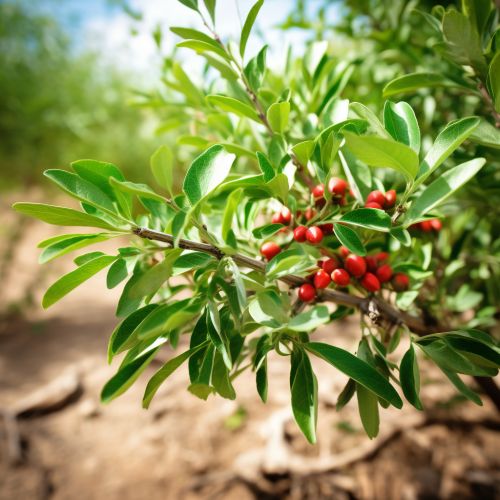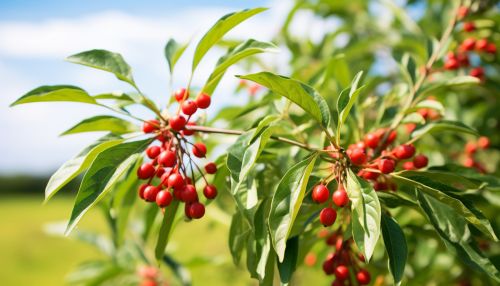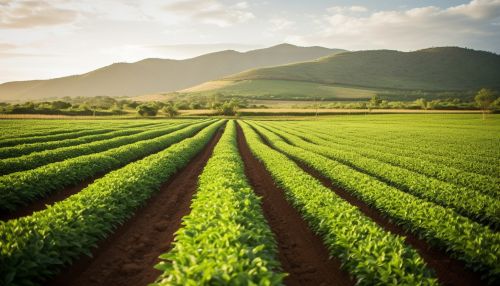Ashwagandha
Introduction
Ashwagandha (Withania somnifera), also known as Indian ginseng or winter cherry, is a plant in the Solanaceae or nightshade family. Several other species in the genus Withania are morphologically similar. It is used as a herb in Ayurvedic medicine, the traditional medicine system of India, and has recently gained popularity in the Western world for its adaptogenic properties.
Botanical Description
Ashwagandha is a small, evergreen shrub that grows to about 1.5 meters in height. It has simple, green, elliptical leaves and bell-shaped flowers. The plant produces small, bright red berries enclosed in a calyx. The roots of the plant are stout and fleshy.


Traditional Use
Ashwagandha has been used for over 3000 years in Ayurvedic medicine. It is considered a Rasayana, or a plant that promotes longevity, vitality, and happiness. The roots of the plant are most commonly used in preparations, but the leaves and berries also have therapeutic properties. It is used to treat a wide range of conditions, including stress, anxiety, insomnia, and inflammation.
Phytochemistry
The primary active constituents of Ashwagandha are alkaloids and steroidal lactones. These include withanolides, withaferins, and sitoindosides. The plant also contains flavonoids, tannins, and phenolic acids. The withanolides are believed to be responsible for the plant's adaptogenic properties.
Pharmacology
Ashwagandha has been studied for its potential effects on various conditions. It has been found to have anti-inflammatory, anti-stress, antioxidant, immunomodulatory, and rejuvenating properties. It is also being studied for its potential use in treating neurodegenerative diseases.
Clinical Studies
Numerous clinical studies have been conducted on the potential health benefits of Ashwagandha. These studies have found evidence supporting its use for reducing stress and anxiety, improving cognitive function, and enhancing physical performance. However, more research is needed to confirm these findings and fully understand the mechanisms of action.
Safety and Toxicology
Ashwagandha is generally considered safe for most people when taken in the recommended doses. However, it may cause side effects in some people, including gastrointestinal upset, diarrhea, and vomiting. It is not recommended for pregnant or breastfeeding women, or for people with certain medical conditions.
Cultivation
Ashwagandha is a drought-tolerant plant that prefers dry, subtropical regions. It is typically grown from seeds, which are sown in the spring. The plant requires well-drained soil and full sun to partial shade. The roots are harvested in the fall, after the berries have ripened.


